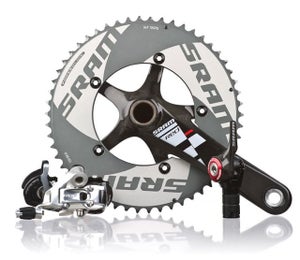New perk! Get after it with local recommendations just for you. Discover nearby events, routes out your door, and hidden gems when you sign up for the Local Running Drop.
In a new regular feature, Aaron Hersh, a former go-to wrench for world champion triathletes such as Craig Alexander and Chrissie Wellington and current Triathlete magazine tech editor, takes your questions about tri tech. You can submit your questions to Aaron at Askaaron@competitorgroup.com. This week, Aaron addresses the issues of when to upgrade your components and the difference between lower and higher priced wetsuits.
Q. Aaron,

After purchasing race wheels for my bike, is it worth upgrading the components or does that really make a difference?
─Ryan
A. Ryan,
In terms of race performance, you have already made the most important component upgrade. Aerodynamic performance, not shift speed or braking power, makes the biggest difference in race-day performance. Upgrading your shifters, derailleurs, or brakes typically will not yield a major aerodynamic upgrade, but they can improve functionality and dependability. The value of these upgrades depends on how you prioritize crisp and reliable component function, but upgrading from entry-level components to high-end will not shave huge chunks of time from your bike split.
Ceramic or high-end steel bearings can save a little time. These bearings tend to be harder or rounder than standard steel bearings, which reduces the friction created when the cranks, wheels or derailleur pulleys spin.
Aerodynamic cranks and aerobars can reduce drag and increase speed. Trek declares that an aerodynamically optimized aerobar can dramatically reduce a bike’s drag.
Q. Aaron,
What’s the biggest difference between low and high priced full-sleeve wetsuits?
─Tim
A. Hi Tim,
Flexibility and buoyancy are the two biggest differences. Every full-sleeve suit, no matter how well designed, tugs on the swimmer’s arms when they extend during a stroke. High-end suits are typically constructed with very thin and flexible neoprene in the shoulders, back and underarms to minimize that tug. Cheaper suits tend to use thicker neoprene or construction techniques that create more resistance for the arms to overcome, which fatigues the shoulders and triceps.
In addition to flexible arms, some high-end suits increase lower body buoyancy by utilizing thick or even aerated neoprene that props the swimmer’s hips high in the water to reduce hydrodynamic drag.
Blue Seventy has introduced a new philosophy of wetsuit design to improve the swimmer’s body position. Instead of increasing total body buoyancy, Blue Seventy says that swimmers that do not have excellent body position when swimming without a wetsuit will benefit more from an especially buoyant lower body and a less buoyant upper body instead of a uniformly buoyant suit. They say suits with a significantly more buoyant lower body than upper body help the swimmer’s hips sit high in the water, relative to their upper body, and create a horizontal body position.
For more on components and wetsuits, subscribe to Triathlete magazine and receive the all-new Triathlete Buyer’s Guide.